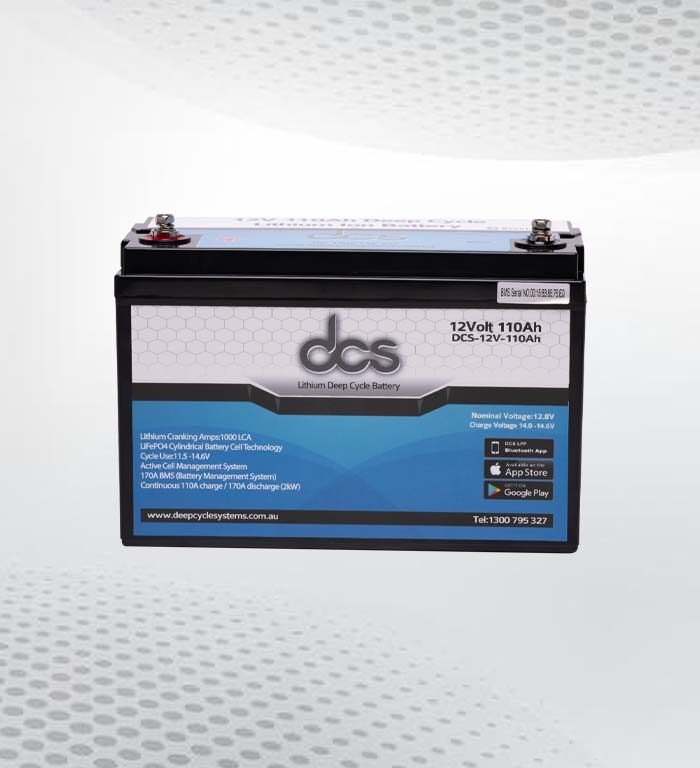From Lifepo4 to Lifep04 Battery: Unveiling the Innovations

As technology advances exponentially, our daily lives become increasingly dependent on efficient and reliable energy sources. This is where the revolutionary LFP battery comes into play. The Lifep04 battery, also known as a Lifepo4 battery, is a type of lithium-ion battery that has been gaining widespread recognition for its superior performance and long lifespan. But what exactly makes this battery so special? This blog post will delve into the innovations and advancements of the LFP battery, and how it is quickly becoming the go-to choice for energy storage solutions in various industries.
Understanding the Basics of LiFePO4 Batteries
LiFePO4 batteries represent a significant advancement in battery technology, marking a departure from older, less efficient chemistries. Central to their appeal is lithium iron phosphate as the cathode material, a choice that imbues these batteries with several compelling characteristics.
Chief among these is their remarkable energy density. Unlike their predecessors, LiFePO4 batteries can store considerable energy in a relatively small space, ideally suited for various applications, from powering electric vehicles to serving as the backbone for renewable energy storage solutions.
Another noteworthy attribute of LiFePO4 batteries is their extended cycle life. These batteries can withstand thousands of charge and discharge cycles with minimal degradation in performance. This longevity enhances their cost-effectiveness over time and contributes to their environmental credentials by reducing the frequency of battery replacements.
Safety is another area where LiFePO4 batteries excel. They are inherently more stable and less prone to overheating than other lithium-ion batteries, largely due to the robust chemical structure of lithium iron phosphate. This stability minimises the risk of thermal runaway, where temperature increases can lead to a self-sustaining cycle of heating and breakdown, potentially leading to catastrophic failures.
In addition to these benefits, the rapid charging capability of LiFePO4 batteries is transforming expectations around recharge times, making them even more competitive in markets that demand high efficiency and reliability.
These attributes underscore the growing preference for LiFePO4 batteries across various sectors, underpinning their role in the transition towards more sustainable energy solutions.
The Critical Role of BMS in Lifeypo4 Batteries
A Battery Management System (BMS) is essential in safeguarding the operational integrity of Lifeypo4 batteries. This sophisticated circuitry plays a pivotal role in orchestrating the battery pack’s performance, ensuring it operates within safe parameters.
The primary function of a BMS is to monitor and manage the real-time status of individual cells within the battery pack. It meticulously tracks each cell’s voltage, current, and temperature, thus averting the risks associated with overcharging and deep discharging.
In LiFePO4 batteries, where efficiency and longevity are paramount, the BMS stands as a guardian, balancing the cells to achieve uniformity in charge levels. This cell balancing is crucial for maintaining the battery’s health and optimizing its capacity over time.
Furthermore, the BMS intervenes to protect the battery from thermal extremes, disconnecting the load or charger in case of overheating, thereby mitigating the hazard of thermal runaway – a phenomenon less common in LiFePO4 batteries but still a risk without proper management.
Integrating a BMS with LiFePO4 technology enhances the battery’s resilience, contributing significantly to its touted longevity and reliability. Through this synergy, LiFePO4 batteries achieve their superior performance metrics, underpinning their growing adoption in diverse applications from electric vehicles to solar energy storage systems.
As such, the BMS is not merely an accessory but a fundamental component that elevates the safety, efficiency, and lifespan of LiFePO4 batteries, cementing their status as a cornerstone of modern energy storage solutions.
Innovations in Lifepo4 BMS
The landscape of Lifepo4 Bms has witnessed transformative innovations designed to optimise performance and safety. Amongst the forefront of these developments is the integration of intelligent algorithms capable of predicting battery life, based on real-time usage and historical data.
This predictive capability enhances the operational efficiency of LiFePO4 batteries and extends their service life by preventing conditions that could lead to premature failure. Moreover, the advent of wireless BMS technologies marks a significant leap forward. These systems allow for remote monitoring and control of battery parameters, facilitating seamless adjustments to optimise performance without requiring direct physical interaction.
This innovation is particularly beneficial in complex installations, such as energy storage systems or electric vehicle fleets, where real-time data analytics can significantly improve overall system efficiency.
Additionally, the focus on modular BMS designs has gained momentum. This approach enables scalability and customisation of the battery management system to suit specific application needs, from small portable devices to large-scale energy storage solutions. It also simplifies maintenance and upgrades, as individual modules can be replaced or augmented without disrupting the system.
Another noteworthy development is the enhancement of safety features within Lifepo4 BMS. Advanced diagnostics tools now identify potential issues before they escalate into serious problems, such as thermal runaway. By closely monitoring cell health and environmental conditions, these systems can initiate preventive measures, ensuring the safety and reliability of LiFePO4 batteries across their lifespan.
These innovations collectively represent a paradigm shift in how Lifepo4 batteries are managed, steering the technology towards a future where efficiency, safety, and adaptability are seamlessly integrated to meet the demands of an increasingly energy-conscious world.
The Advancements in Lifep04 Battery Technology
The progression in Lifep04 Battery technology has been characterised by substantial enhancements across several fronts, propelling these batteries to the forefront of sustainable energy solutions.
Among the notable improvements is the development of new electrode materials, which have significantly increased the electrochemical performance of these batteries. Innovations in anode and cathode compositions have led to batteries that not only have a higher energy density but also exhibit greater efficiency during charge and discharge cycles.
Manufacturing processes have also seen considerable refinement. Techniques that ensure uniform particle distribution within the battery cells have contributed to more consistent performance and longer battery life. This uniformity is critical in preventing localised stress and degradation within the battery, enhancing its overall durability and reliability.
Another area of advancement is the design of the battery cells themselves. Engineers have optimised cell structures to allow for better ion flow, which in turn improves the charging rates and power output of LiFePO4 batteries. This optimization also contributes to reducing internal resistance within the battery, a factor that directly influences its lifespan and efficiency.
These technological strides augment the performance parameters of LiFePO4 batteries and contribute to their environmental appeal. The shift towards materials and processes that are more ecologically sound reinforces the position of LiFePO4 batteries as a key component in the transition to greener energy storage systems.
Moreover, these advancements enhance the economic viability of LiFePO4 batteries by improving their cost-performance ratio, making them an increasingly attractive option for a wide range of applications, from portable electronics to grid-scale energy storage solutions.
Environmental Impact of LiFePO4 Batteries
LiFePO4 batteries stand at the forefront of eco-friendly energy storage solutions, distinguished by their minimal ecological footprint. These batteries eschew hazardous heavy metals, starkly contrasting traditional battery chemistries that rely on lead, cadmium, or other toxic substances.
This absence of harmful materials makes LiFePO4 batteries a safer choice for the environment, reducing the potential for pollution and facilitating easier, more sustainable disposal processes.
The environmental advantages of LiFePO4 batteries extend beyond their composition. Their remarkable cycle life—capable of thousands of charge and discharge cycles before performance begins to wane—significantly diminishes the ecological impact of frequent battery replacements. This longevity reduces waste, as fewer batteries need to be manufactured, transported, and ultimately disposed of over time.
Recycling plays a pivotal role in the lifecycle of LiFePO4 batteries, enhancing their environmental credentials. At the end of their usable life, these batteries can be fully recycled, enabling the recovery of valuable materials for reuse in new battery production. This circular manufacturing approach conserves natural resources and limits the environmental degradation associated with raw material extraction and processing.
Given their eco-friendly attributes, LiFePO4 batteries represent a sustainable option within the broader context of renewable energy systems. Their integration into solar, wind, and other renewable installations can significantly amplify these technologies’ environmental benefits, driving the transition to a more sustainable and low-carbon energy future.
Through adopting LiFePO4 batteries, individuals and industries alike can contribute to reducing global carbon emissions, aligning with broader efforts to combat climate change and protect our planet for future generations.
Navigating the Market: Choosing the Right LiFePO4 Battery
Selecting the optimal LiFePO4 battery for your application requires careful consideration of several critical parameters. Firstly, assess the energy capacity, often measured in ampere-hours (Ah), to ensure it meets your system’s power requirements. Equally important is the battery’s voltage, which should align with your system’s operational needs to avoid underperformance or compatibility issues.
Additionally, scrutinise the cycle life rating, which indicates how many charge-discharge cycles the battery can endure before its capacity significantly diminishes. This figure is pivotal for applications demanding longevity and minimal maintenance.
Safety features embedded within the battery and its management system should not be overlooked. Look for batteries equipped with advanced protection mechanisms against overcharging, deep discharging, and thermal extremes, impacting battery lifespan and performance.
It is also advisable to research the manufacturer’s reputation. A proven track record in delivering high-quality, reliable batteries can serve as a measure of reassurance and value. Consult reviews, user testimonials, and industry certifications to gauge the manufacturer’s standing and the battery’s performance consistency across its lifespan.
Lastly, consider the environmental aspect of the battery’s lifecycle, including its recyclability and the manufacturer’s commitment to sustainable practices. This consideration reflects a responsible choice and aligns with the broader objective of reducing environmental impact.
By meticulously evaluating these aspects, you can make a well-informed decision ensuring the chosen LiFePO4 battery aligns with your specific requirements and overarching sustainability goals, thereby securing an optimal energy storage solution.
The Future Prospects of LiFePO4 Battery Technology
The horizon for LiFePO4 battery technology is marked by exhilarating advancements, with the sector buoyed by relentless innovation and an expanding sphere of applications. Research endeavours tirelessly pursue novel electrode materials and enhanced cell configurations, aiming to surmount existing limitations and unlock even greater efficiency and energy capacity.
These efforts are expected to elevate the performance metrics of these batteries and make them more accessible by reducing costs. Furthermore, integrating LiFePO4 batteries into the burgeoning realm of electric mobility and renewable energy systems is set to accelerate, driven by their superior safety profile, longevity, and environmental benefits.
The push towards electrification of transport and the global shift towards sustainable energy sources underscore these batteries’ pivotal role in the energy transition. Emerging technologies such as solid-state batteries and advancements in battery management systems also promise to enhance the performance and applicability of LiFePO4 batteries. These innovations could lead to more compact, efficient, and durable energy storage solutions, broadening their utility across many sectors.
As the global community continues to grapple with climate change challenges and the need for renewable energy solutions, the strategic importance of LiFePO4 batteries in achieving a low-carbon future becomes ever more apparent. Their development and deployment are crucial in realising the vision of a sustainable, energy-efficient world, making the ongoing exploration and investment in LiFePO4 technology both a necessity and an opportunity for the coming years.
Conclusion
The transformative journey of Lifep04batteries from their inception to becoming a cornerstone of modern energy storage solutions encapsulates a narrative of relentless innovation and environmental stewardship. These advancements have recalibrated expectations around performance and sustainability in the energy sector and opened new vistas for applications ranging from daily electronic devices to large-scale renewable energy systems. With a pronounced focus on improving battery management systems and enhancing the electrochemical properties of these batteries, the industry has witnessed a leap towards more reliable, efficient, and eco-friendly energy storage options.
FAQs
What distinguishes Lifepo4 from Lifep04 batteries?
The distinction between Lifepo4 and Lifep04 primarily arises from the spelling variation, which often leads to confusion. However, it’s important to understand that both terms refer to the same battery chemistry – lithium iron phosphate (LiFePO4). This battery type is renowned for its exceptional safety profile, longevity, and capacity to deliver high energy density, making it a popular choice across various applications.
Can LFP batteries be employed in solar energy systems?
Indeed, LFP batteries are highly compatible with solar energy storage applications. Their robustness, impressive energy density, and extensive cycle life make them ideal for storing surplus energy generated by solar panels. This stored energy can then be utilised when solar output is diminished or when there is an elevated demand for electricity, thereby ensuring a continuous power supply.
What is the procedure for recycling Lifep04 batteries once they’ve reached the end of their life?
Recycling Lifep04 batteries is a straightforward process to minimise environmental impact and reclaim valuable materials for future battery production. After their service life, these batteries can be taken to dedicate recycling facilities or returned to certain manufacturers who operate take-back schemes. These entities can safely process the batteries, extracting and repurposing critical components. To ascertain the most convenient recycling option, it’s advisable to contact local waste management services or consult the manufacturer’s guidelines provided with your battery. This ensures that the end-of-life batteries are handled responsibly, contributing to the sustainability cycle of battery resources.




